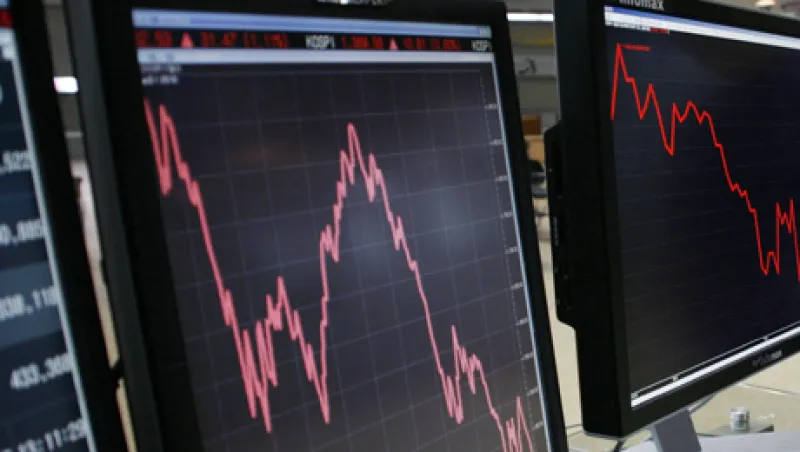The first handful of hedge funds to report October results have lagged the broader market. Not that they're apologizing for it. This is because many of them had their portfolios structured very conservatively and not to fully benefit from a straight upward move in the markets.
Most investors are nervous and concerned about the volatility, the European/Greece debt crisis and the budget discussions in the U.S. So, they were satisfied because they know that had the markets tanked by the amount they rose, they would not have fared nearly as badly.
Dan Och’s OZ Master Fund gained just 0.66 percent in October. This was enough to push the multi-strategy fund into the black for the year, by a mere 0.11 percent.
In a press release discussing third quarter results, Och was unapologetic for the firm’s defensive stance and underperformance. “During the third quarter of 2011, the global financial markets experienced significant turbulence in response to the European sovereign debt crisis and weaker macroeconomic conditions,” he said. “Against this backdrop, we protected investor capital through our consistent and disciplined investment and risk management processes.”
As a result, the firm is determined to manage portfolio exposures, he added. “We are confident that the stability of our business and the diversification that results from our multi-strategy approach position us to capitalize on the investment opportunities that will arise from this environment,” Och further stated.
Among his other funds, OZ Europe Master Fund, Ltd. gained 0.22 percent in October, but is still off by 3.27 percent for the year; OZ Asia Master Fund Ltd. gained was up 2.27 percent for the month but remains down 1.39 percent for the year.
At the same time, the S&P staged a ferocious rally, gaining 10.33 percent for the month despite a major setback on the final day of the period.
Ken Griffin’s surging Kensington and Wellington funds—which run a market neutral book--were up about 2.2 percent for the month. That’s okay. They are still up 17.5 percent for the year and within a few percentage points of hitting the high water market for the first time in nearly three years, according to people familiar with the results.
Meanwhile, Griffin decided to close his $2 billion Global Equities fund, which is up 18 percent for the year, to new investors.
David Einhorn’s Greenlight Capital enjoyed a pretty good month, gaining 6.9 percent. This final put the opportunistic investor—recently known for his failed big to buy the New York Mets and his high-profile case for shorting Green Mountain--in the black for the year by 1.4 percent.
The investment returns were reported by Greenlight Re, the insurance company controlled by Einhorn. It points out that investment returns are based on the total assets in its investment account, which are managed by DME Advisors, LP and include the majority of its equity capital and collected premiums.
In a conference call to discuss the insurer’s third quarter results, Einhorn said the conservative stance that he maintained throughout the first half of the year in a rising market was rewarded in the third quarter as his firm was able to preserve capital in the Greenlight Re portfolio and generate a flat result in a quarter where the S&P fell about 14 percent.
He said he entered the third quarter about 23 percent net long, down about 10 percent from where he entered the second quarter. “In the first half of the year, we consolidated our short positions into our highest conviction ideas and sold a number of our lower conviction long positions, including some of our more cyclical exposure in Europe,” Einhorn added.
In the third quarter, the long portfolio lost a bit more than the market but the short portfolio generated an absolute portfolio return of about 12 percent on an average short exposure of 60 percent, reversing more than all the loss in the short book during the first half of the year. “Our macro hedges also helped in the quarter with slight positive returns coming from gold and our European sovereign and CDS positions, where we’ve taken some profits,” he added.
Einhorn also said as the market retreated over the past few months, he added to a few of his existing long positions, found a few new investment opportunities primarily in the technology and auto sectors, and covered several shorts. He also exited a long-held stake in Pfizer “profitability as better opportunities presented themselves.”
During the third quarter, Einhorn also said he shifted a portion of his gold investment from physical gold into ETF gold mining companies. “Throughout the course of this year, a substantial disconnect has developed between the price of gold and the mining companies,” he explained. “With gold at today’s price, the mining companies have the potential to generate double-digit free cash flow returns and offer attractive risk adjusted returns even if gold does not advance further. Of course, since we believe gold will continue to rise, we expect gold stocks to do even better.”
Then, late in the quarter, he increased net long exposure to 35 percent, which enabled him to benefit from the unexpected strong market in October.
Looking forward, Einhorn stressed that the investment environment remains challenging. On the one hand, many equities, especially large caps, seem attractive. However, this is offset by what he calls “the continuing impact of dangerous macro policies.”
He said he slightly reduced his net long portfolio exposure and ended October 33% net long. Entering November, his largest disclosed long positions in his portfolio were Apple, gold, Market Vectors Gold Miners, Microsoft and Vodafone Group.
Over in London, the Brevan Howard fund, which has been outperforming the broader markets throughout this year being heavily defensive, actually lost 1.32 percent last month through Friday October 28, leaving the mutli-strategy’s dollar-based shares up about 10.09 percent for the year.
That's why they're called hedge funds.







